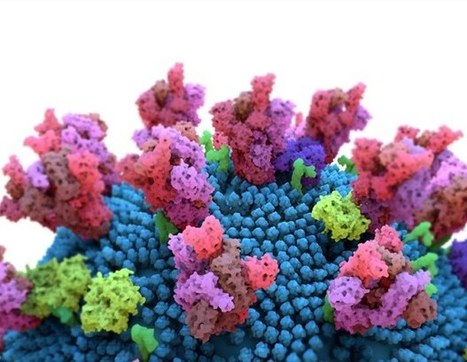Researchers in the United States and Japan have conducted a study showing a common mutation in the spike protein of severe acute respiratory syndrome coronavirus 2 (SARS-CoV-2) - the agent that causes coronavirus disease 2019 (COVD-19) - enhances the infectivity, replication, and early transmission of the virus. The team’s study of SARS-CoV-2 engineered to harbor the D614G mutation found that this strain was replicated more efficiently in primary human proximal airway epithelial cells than the wildtype virus did. In a hamster model of infection, the D614G strain also showed much faster respiratory droplet transmissibility than the wildtype virus shortly following infection. Ralph Baric (the University of North Carolina at Chapel Hill) and colleagues from the University of Wisconsin, University of Tokyo, and the National Institute of Infectious Diseases, Tokyo, say the findings support the need to periodically review SARS-CoV-2 contemporary isolates and identify any new variants with increased transmissibility and pathogenesis that may have emerged. A pre-print version of the paper is available on the server bioRxiv*, while the article undergoes peer review.
To investigate the function of the D614G substitution in SARS-CoV-2 replication and transmissibility, the researchers engineered variants containing the D614G mutation in the spike protein, as well as a second variant containing the gene for the bioluminescent reporter nanoLuciferease (nLuc). The team compared the growth of wildtype SARS-CoV-2 and the D614G variant in primary human nasal epithelia (HNE), large (proximal) airway epithelia (LAE), and distal lung small airway epithelia (SAE). The D614G-infected HNE and LAE cultures, but not the SAE cultures, exhibited significantly higher viral titers than the wildtype-infected cultures. Competitive co-infection assays performed in LAE cultures simultaneously infected with both viruses showed that the D614G variant became dominant in the cultures, whether the wildtype virus was originally present at a 1:1 or 10:1 ratio over the D614G mutant. Next, the team performed scanning and transmission electron microscopy to visualize virions present on the surface of primary human airway cell cultures. No significant differences in virion morphology or the number of spike proteins were observed between the two viruses.
Further analysis revealed more differences between the viruses
The researchers used the nLuc-expressing recombinant SARS-CoV-2 encoding either wildtype or D614G spike to measure antibody neutralization activity in serum samples taken from mice vaccinated with D614 (wildtype) spike. This revealed that the samples half-maximal inhibitory dilution values against the D614G virus were between 0.8 and 5.1 times higher than against the wildtype virus, indicating that the D614G variant makes SARS-CoV-2 more sensitive to neutralizing antibodies.
Evaluating respiratory droplet transmissibility
To evaluate the role of the D614G variant in SARS-CoV-2 respiratory droplet transmissibility, the researchers set up eight pairs of hamsters, each comprising a naïve hamster alongside an infected animal 1 day following infection. Both the wildtype and D614G viruses were efficiently transmitted to naïve hamsters. At 4 and 6 days following infection, the infected hamsters and the exposed hamsters exhibited similar viral titers, regardless of which virus they had been infected with. However, five of eight hamsters exposed to the D614G-infected group showed infection and had detectable viral shedding on day 2, while those exposed to the wildtype-infected group showed no infection or viral shedding. This suggests that the D614G variant is transmitted much more quickly between hamsters via droplets and aerosols than the wild type virus is.
Study available at preprint in bioRxiv (Sept. 29, 2020):



 Your new post is loading...
Your new post is loading...








